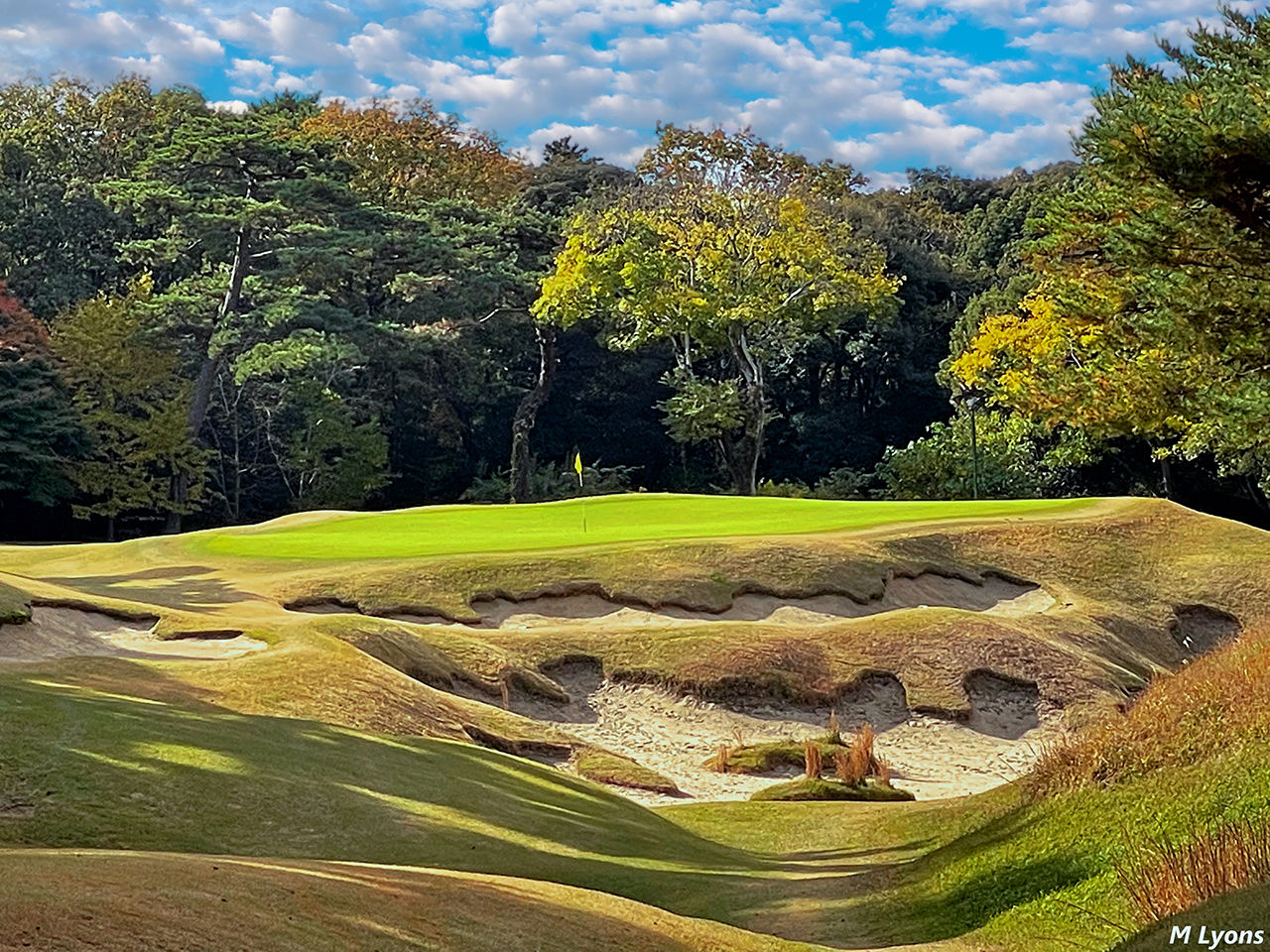“Subarashi shotto,” or “great shot” in Japanese – it was music to the ears of 24 Golfweek’s Best panelists on a recent first-ever outing to the Land of the Rising Sun.
On the docket during the 11-day trip were seven of the top-ranked courses in Japan along with a few non-golf days to relax, enjoy the Eastern culture and take in some sights.
First on the agenda for the travel-weary crew was bed and a good night’s rest. Rumor has it a few even enjoyed a sake or two before turning in.
The first full day in Japan was devoted to a bus tour of Tokyo, highlighting several of the more famous landmarks. First stop was the Asakusa Senso-ji Temple – the oldest Buddhist temple in Japan at over 1,300 years old. The current shrine was rebuilt in 1946 after being destroyed in World War II.
Raters enjoyed the fragrant incense from the temple’s communal urn while they bargained for kimonos, traditional sweets, ceremonial fans and fine chopsticks at the many shops on the temple grounds. Some even paid the 100 yen (about 75 cents) at the o-mikuji stalls to consult the oracle and find divine answers to life’s questions. Sadly, requests for lower handicaps were not answered.

Tokyo Skytree (Courtesy of Golfweek raters)
Next tour stop was Tokyo Skytree. At 2,080 feet high, the Skytree, completed in 2011, is the tallest tower in the world and third tallest building. Skytree is not just visually stunning, it is also an engineering marvel, containing one of the fastest elevators in the world. To calm the overly nervous visitor, Skytree has one of the most elaborate cushioning and seismic damping systems of earthquake proofing anywhere. The Golfweek’s Best raters dutifully oohed and aahed at the forever views from the lofty observation deck.
Returning to the hotel to freshen up, many raters were soon out again to take in the downtown sights and enjoy a sushi dinner.
But back to business.
First on the golfing docket was Toyko Golf Club. This venerable club dates back more than a century, although the current course – designed by Komei Otani – opened in 1940 and occupies the club’s third location. Once more common but rarer now, each of Toyko’s eighteen holes has two greens. The double greens, one set with winter and the other with summer grasses, allow the club to play the course year-round, even during the sometimes extreme seasons common in Japan.

A team of Golfweek’s Best raters in Japan (Courtesy of Golfweek’s Best raters)
The raters enjoyed a gently rolling walking course boasting stern bunkering and demanding approach shots to near perfect greens. It’s easily a club at which you would be proud to hang your hat and enjoy a different set of golf customs than found in most of the world.
“Scotland may be the home of golf, but in Japan the game is revered,” said veteran rater Jim Simmons. “It’s not simply a round of golf, but the polite, wonderful customs and idiosyncrasies which make for a unique day of golf in Japan.”
Gone from today’s Japan is the once-strong caste system, in which you were either a warrior, farmer, craftsman or artisan. What remains is a society where the traditions of order and status are recognized, honored and respected without the strict social segregations of the past.
The act of bowing is called ojigi, originated from the samurai and a is fundamental part of daily Japanese salutations and etiquette. One bows from the waist with a straight back; a slight bow or head nod may be interpreted as being lazy or showing disrespect.
In ojigi, the angles of inclination of one’s body and the positions of one’s hands are important components conveying respect to the status of both the person bowing and the person being bowed to. Proper bowing is taught at a young age. Some modern Japanese companies even teach bowing techniques to new employees.
Next up on the tour was another top Japanese club. Yokohama Country Club includes a pair of golf courses, one with limited public play (East) and the other open largely to members only (West). The West Course, originally laid out in 1960 by Takeo Aiyama, was reworked in 2016 by the American architecture team of Bill Coore and Ben Crenshaw. A rolling – hilly in places – piece of property (escalators are required at several holes), the West Course features pastoral vistas, stern approaches to smaller greens and an excellent set of par 3s. The East Course was left for a future visit.

